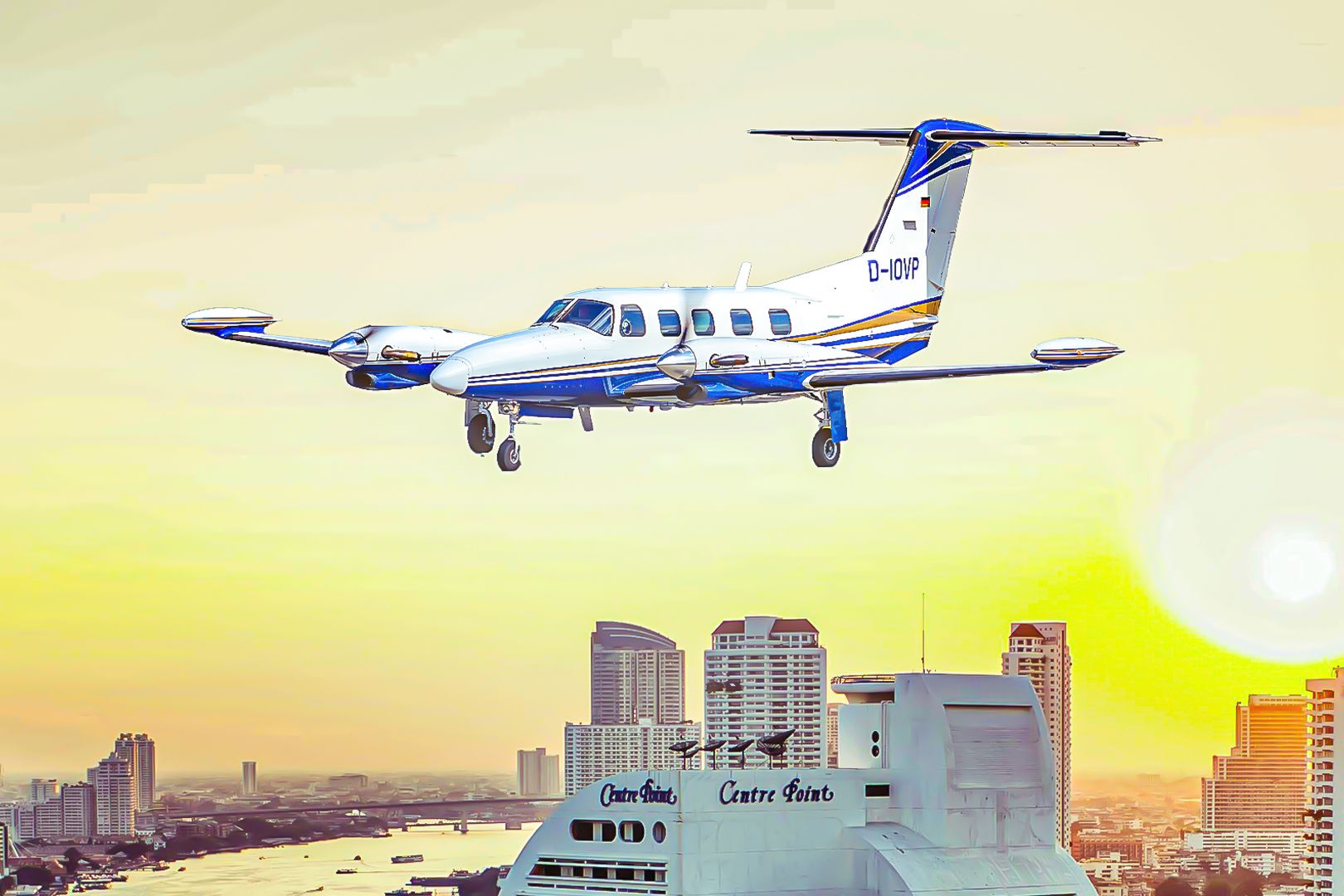The Piper Cheyenne is a medium-sized turboprop aircraft designed and developed by Piper Aircraft. Designed in the early 1970s, it was one of the most innovative designs of its time. This article explores some innovative aspects of the Cheyenne family of aircraft.
1 Wingtip fuel tanks Total fuel capacity: 390 US gallons Fuel is carried in six tanks Three interconnected tanks in each A wing-wet nacelle tank Two bladder-type fuel cells Two optional wingtip tanks The Piper Cheyenne was one of the first aircraft to design and use wingtip fuel tanks successfully. A unique feature seen in the early Cheyenne aircraft in the late 1960s, the 30-gallon wingtip fuel tanks provided additional range for the aircraft. Remarkably, the wingtip fuel tanks were offered as an optional feature on the aircraft.

However, almost all operators selected the option. The company designed and developed several aircraft from the late 1940s to the 1950s. 2 The flight stability augmentation system For longitudinal stability Following the two Boeing 737 MAX crashes in October 2018 and March 2019, and the type’s reputation, the aviation world is aware of the Maneuvering Characteristics Augmentation System (MCAS).
It may be surprising for some that the Piper Cheyenne featured a similar system, the flight stability augmentation system, in the 1970s. The system was designed to control the longitudinal stability of the aircraft, which was affected by its powerful engines. Notably, the following variant, Cheyenne I, was released with less powerful engines to tackle the problem.
Subsequently, the new variant was certified without the use of the flight stability augmentation system. The company was initially founded nearly 100 years ago. 3 The most versatile load hauler The Cheyenne IIXL Manufactured: 1981 - 1984 Fuselage stretch: two feet Climb power limit: 500 shaft horsepower Seating: Eight Nose and aft baggage areas: 200 lbs each Cruise altitude: 29,000 ft Cruise speed: 250 knots Range: 1,170 NM Endurance: 4 hours 30 minutes Total number produced: 81 The Cheyenne IIXL was one of the most versatile load haulers among all the Cheyenne models.
The type was designed to seat eight people, each with up to 170 lbs of load and full fuel. The fully loaded aircraft could efficiently takeoff and climb to an altitude of 29,000 ft and cruise at a speed of 250 knots. With a full load of passengers, baggage, and fuel, the IIXL had an IFR range of 1,170 NM and an endurance of four hours and 30 minutes.
Cheyenne’s innovative approach to components and systems led to the best variant for high payload operations. The Cheyenne I was powered by two Pratt & Whitney PT6A-11 turboprop engines, each generating up to 500 shaft horsepower at takeoff. The reverse-flow free turbine arrangement engines had a maximum propeller speed of 2,200 RPM.
The Aerostar was first introduced in 1967. 4 Corrosion-resistant structure Highly-treated structural materials Over the course of the aircraft’s operational career, it had remarkably few major structural maintenance issues. With only a handful of airworthiness directives issued for the type, the Cheyenne family has mostly weathered well over the years.
Piper has extensively used anti-corrosion materials for the structure, making it less prone to corrosion fatigue. The use of anti-corrosion epoxy primers on structural materials resulted in a long-lasting airframe that required only minor maintenance. Moreover, Piper endured that parts for older aircraft types were not only in production but quite easily available for replacement.
Piper takes pride in making the part upon request if one is not readily available. According to the Aircraft Owners and Pilots Association (AOPA) , “For an aging airplane, the Cheyennes have remarkably few major maintenance problems or airworthiness directives. Structurally, they have weathered well over the years.
Corrosion of the airframe has been rare, thanks to Piper’s use of extensive anti-corrosion treatments and epoxy primers. Parts availability for older Cheyennes hasn’t been a problem. Piper still stocks a lot of parts, but if a Cheyenne part is unavailable, Piper will still make you one.
” Piper Malibu, now known as the Piper M-Class, has been one of the best general aviation aircraft due to its top-of-the-line avionics suites..



















